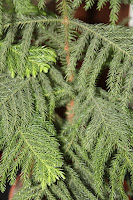Meadow Pink Texas Star Sabatia campestris Sabatia angularis

Meadow Pink is a small, native, annual, pink-flowering plant found primarily in the southern US. Its other common names include Rose Gentian, Prairie Rose-gentian, Texas Star and Prairie sabatia. The five-petaled flowers are an inch or two across and the plants are one to two feet tall. Meadow Pinks spread by seed to form colonies. The challenge is to leave them alone during spring weeding since the new rosettes pop up where you least expect them and are easy to forget from year to year. Sabatia prefers dry garden soils that have good drainage; a sandy place would be perfect. Sabatia angularis, Rosepink, is available from seed companies (www.prairie moon.com ). It is also a Gentian, sometimes called Marshpink, Bitterbloom, Rosepink and Rose Gentian. Sabatia kennedyana, Bog Sabadia for wetlands, seeds are available from carniverousplantnursery.com Sabatias are biennials, They grow a rosette of leaves the first year, then have pink, gold and magenta flowers on multi-branched stems,


